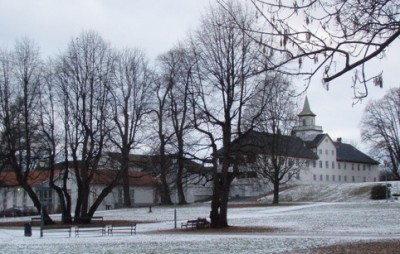MUSEUM GUIDE: Norway’s capital is packed with museums, and they’re often popping up in the news. We’re following that news, and aim to focus regularly on a specific museum or attraction worthy of a visit.
THIS WEEK: The City Museum (Bymuseet) in Oslo, a way to learn hundreds of years of history in as little or as much time as you’d like to spend.

The City Museum (Bymuseet) in Oslo was established in 1905 with the mandate of making Oslo’s history and development accessible. The museum is part of the Oslo Museum, an umbrella term for the City Museum, the Oslo Theatre Museum, and the Intercultural Museum.
The City Museum has been located on the fringe of the Frogner Park since 1909 and is comprised of two buildings. The main building has various wings and contains the museum’s exhibitions. The second building is the historical, 17th century Frogner Manor (Frogner Hovedgård). The exhibitions in the main building offer a staggering amount of information about Oslo’s establishment, how it became prosperous, and how it has grown from its origins in the oldest neighborhoods still standing today: Kvadraturen and Gamlebyen.

The museum begins Oslo’s story in 1648, when a street plan was drawn up for a city called Christiania. The settlement known since Viking times as Oslo had fallen under Danish rule, and Denmark’s King Christian IV — known for naming places after himself — was keen to rebuild after another devastating fire had destroyed most wooden buildings at the time.
Readers who have visited today’s Oslo know that the formidable Akershus Fortress is located downtown and proudly stands watch over the fjord; the original Oslo was located further away from Akershus. The Danish king decided during the planning stages of the city’s re-construction that the new city should be built closer to the fortress for protection, with an emphasis on masonry instead of wood.
With time, Christiania expanded from a small city to a bustling one as a result of success in the timber trade during the 18th century, and later in the textile, shipbuilding, tobacco and beer industries. It regained its status as the capital of an independent Norway when the Danish dominance and a subsequent Swedish union were dissolved, paving the way for construction of major institutions like the Parliament building, the Supreme Court and the Central Bank. City officials took back the city’s original name of Oslo in 1925.

Besides explaining Oslo’s history (on information panels that have, in large part, been translated into English), the City Museum offers other attractions. It is filled with a vast collection of local landscape paintings that is one of the largest collections in Norway. The museum also displays many photographs, maps, models, and some sculptures. One map shows Oslo’s neighborhoods as they are today, and superimposed on top is the year the neighborhoods were created, ranging from 1624 to 1948. Together, these tell Oslo’s story in a colourful, beautiful way.
Visitors can also wander through re-created kitchens of homes through the centuries, and the museum offers continuously changing special exhibits. One currently features Sølvguttene – the Norwegian boys’ choir that’s celebrating its 70th anniversary this year. The exhibition displays the work of a photographer who followed the choir for a year, capturing the boys in concert, in rehearsal, or during leisure time. It is called “Boys of Silver – the sound of a community” and is open until December 19th.
The second exhibition is permanent, and is called “In the Spotlight.” It seems to have been made to complement the Oslo Theatre Museum as it explores the development and significance of performing arts in Oslo. An entire wall of the exhibition is filled with photographs of the various theatres that have existed in Oslo through the years, from the early Christiania Theatre in 1837, to the Nationaltheatret in 1899, to the Oslo New Theatre in 1959, to the Operahus in 2008, and more.
On these snowy, blustery days, the City Museum in Oslo is a cozy place to spend some time. There is a large café lined with big windows facing the historic Frogner Manor, and a busy museum shop. If you go to the museum on Sunday at 1:30pm, you can have a free, 20-minute tour (in English upon request).
Oslo City Museum (Bymuseet)
http://www.oslomuseum.no/bymuseet/default.asp?fid=1000 (external link)
Open: Tuesday-Sunday, 11am-4pm.
Location: Frognerveien 67, on the western border of the Frogner Park. The entrance to the park closest to the museum is at Frogner Plass, so take bus #20 or trikk #12 to Frogner Plass. (For a longer walk through the park, you could get off at Vigelandsparken.)
Admission: Free.
ALSO IN OUR MUSEUM GUIDE:
The Museum of Contemporary Art
The Museum of Decorative Arts and Design (Kunstindustrimuseet)
Norsk Folkemuseum (The Norwegian Museum of Cultural History)
Summertime at The Munch Museum
The Natural History Museum – Botanical Gardens
The National Museum – Architecture
“Be a tourist in your own town”
Views and News from Norway/Isabel Coderre
Join our Forum if you’d like to comment on this story.

